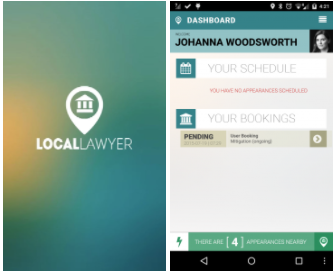 Independent developer Aric Caley got tired of peeling API potatoes and was ready to be an app chef. After spending a lot of time prepping his own dev kitchen, he tried a few other platforms before finding DreamFactory. Once he did, his cooking got much better.
Independent developer Aric Caley got tired of peeling API potatoes and was ready to be an app chef. After spending a lot of time prepping his own dev kitchen, he tried a few other platforms before finding DreamFactory. Once he did, his cooking got much better.
“At first, I wasn’t really sure what to think of it, it seemed like magic,” says Aric.
“In my previous experience building a mobile app, I went looking for what modern frameworks could do for me. Around this time, Zend framework was really getting popular and they had just created Apigility. It was still kinda raw and I didn’t think it was going to get me where I wanted to go. So I went with Symfony, and started coding my API.
I had to set up user authentication, of course, which I had some trouble with. Then, getting down to the meat and potatoes of my API, which was a lot like peeling potatoes. I had a bunch of nice controllers and models to expose my database schema, a lot of code that largely looked the same. I was getting annoyed because I really wanted to focus on the mobile app.”
His most recent app, LocalLawyer, is a B2B mobile and desktop app, using the Ionic framework to deploy across platforms. It uses DreamFactory to provide the backend API using Google Cloud (VMs and SQL). Through DreamFactory, he also leverages the APIs for Stripe, Geo Services, Avvo, Mailgun, Ionic, and plans to eventually integrate Twitter, Facebook and LinkedIn. DreamFactory handles the user authentication, database and cloud services, access control, email templates, and business logic. Aric also uses native Javascript on both the front and backend to glue everything together.
Aric explains, “Once I understood what DreamFactory was, it took me almost no time at all to leverage it. I initially brought up an API in a cloud server from Bitnami using AWS, pointed it at my existing database, and viola, I had an API - in under an hour. Not only that, I had solid user authentication without having to do anything. All my tables had an API, instantly, and access control. Features I hadn’t hadn’t even had time to start coding in the past, were now just a few clicks away. Once I determined DreamFactory was going to work for me, I setup an instance on Google’s infrastructure. Moving my app to point to the new API was just a few more hours of work. At times when I got stuck - which isn’t often - I turn to the forums for support.”
He has abandoned his previous Symfony API and switched over fully to DreamFactory. Now he uses Ionic as a mobile framework with DreamFactory for LocalLawyer, which is currently in beta testing. LocalLawyer connects lawyers and other legal professionals to schedule court appearances and document preparation.

DreamFactory gives Aric confidence in his app’s release because he knows it will scale with his impending growth.
“Another benefit of having peace of mind with DreamFactory is when we begin to operate, I know I can scale as needed. Additional DreamFactory backends can be brought online as needed using Google Cloud services. Using the Bitnami stack, I can get up to date new instances of DreamFactory running in just minutes. I can easily point the database service from the internal MySQL running on the instance (the initial setup) to a Google SQL instance (the current setup). With Google Cloud I can load balance multiple DF instances and set up replicated SQL databases.
Terence Bennett, CEO of DreamFactory, has a wealth of experience in government IT systems and Google Cloud. His impressive background includes being a former U.S. Navy Intelligence Officer and a former member of Google's Red Team. Prior to becoming CEO, he served as COO at DreamFactory Software.
























 Blog
Blog

